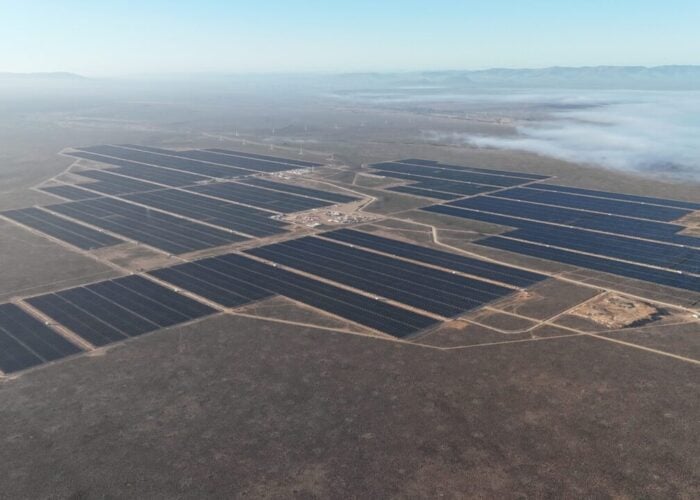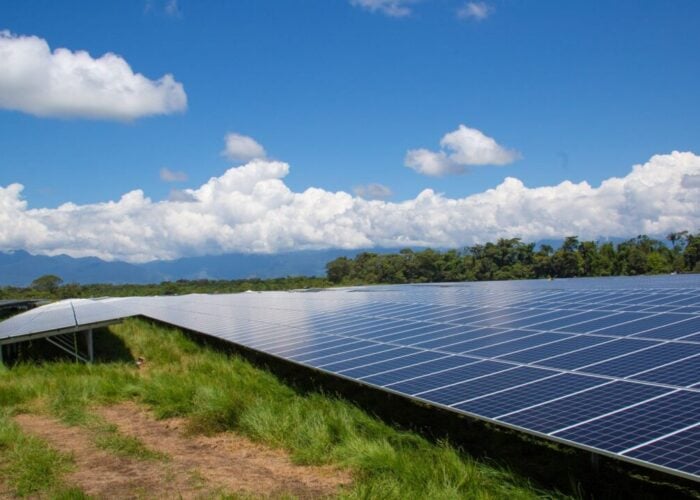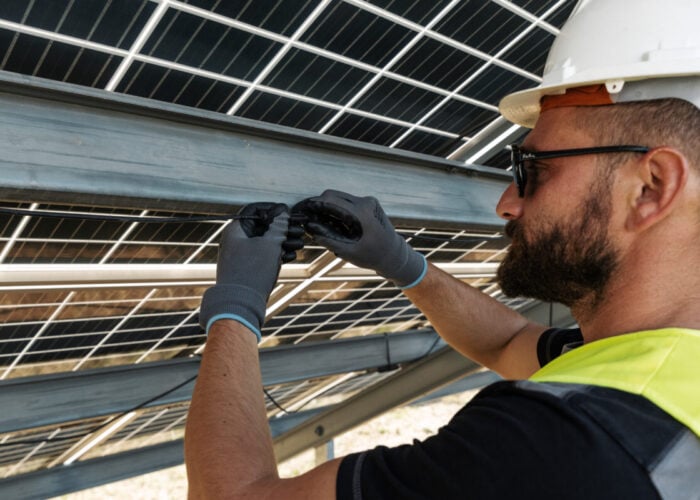
Global net zero by 2050 is now “impossible” and the world is on course for temperature rises of 2.6 degrees Celsius, according to energy market analyst Wood Mackenzie.
No G7 country is on track to meet its 2030 emissions reduction goals, the analysis says, eliminating the possibility of achieving global net zero by 2050 and making it very unlikely to meet the aim of keeping global warming below 2 degrees Celsius, as set out in the Paris Climate Agreement.
Try Premium for just $1
- Full premium access for the first month at only $1
- Converts to an annual rate after 30 days unless cancelled
- Cancel anytime during the trial period
Premium Benefits
- Expert industry analysis and interviews
- Digital access to PV Tech Power journal
- Exclusive event discounts
Or get the full Premium subscription right away
Or continue reading this article for free
The report said that to stay below the 2 degrees Celsius threshold, the world would require US$4.3 trillion in annual investment between 2025-2060 and an increase of the energy sector’s share of global GDP from 2.5% to 3.25% within the next decade. Even then, global net zero would not be met until 2060, a decade later than scientists deemed necessary to mitigate the worst effects of climate change.
Even as renewables have grown faster than any other energy source to account for 20% of global power supply, up from 5% a decade ago, headwinds have begun to blow against the sector, Wood Mackenzie’s report said.
“The energy system is becoming more complex, interconnected and volatile,” said Prakash Sharma, vice president, head of scenarios and technologies for Wood Mackenzie. “As power demand surges due to the expansion of technologies such as AI and electrification, what was once a mostly aspirational shift towards decarbonisation is now facing the hard trade-offs of scale, system integration, capital allocation and geopolitics.”
The US, China and Europe will be the deciding powers in the future of energy and climate, the report said.
As the US has backtracked on climate under the Trump administration, including leaving the Paris Agreement, backing greater fossil fuel extraction and removing incentives for clean technologies, “China is seizing the low-carbon mantle through EV and solar dominance, plus aggressive renewables deployment,” Sharma said. China is also still the leading fossil fuel emitter.
“Europe maintains the strongest net zero ambitions, viewing clean technologies as essential for economic and energy security,” Sharma added; however, earlier this year, some economists warned that the continent’s commitment to expand military spending could take away from its climate change programmes.
In October 2024, global consultancy firm DNV warned of the risk that global conflicts and macroeconomic challenges pose to the energy transition, diverting attention and resources that could otherwise go towards climate issues.
Wood Mackenzie’s “base case” forecast will see variable renewables—mostly solar and wind—comprise 60% of global power generation by 2050, with solar PV capacity alone set to double by 2030, surpass gas in 2033 and then overtake coal in 2034.
The US has the steepest investment hike if it is going to reach net zero, requiring a 76% increase from US$388 billion annually to US$682 billion. Europe needs a 36% increase from US$455 billion annually to US$619 billion and China needs a 29% increase from US$913 billion annually in Wood Mackenzie’s base case to US$1.177 trillion to reach net zero.
Many other nations and regions need to “more than double transition spending” to achieve net zero emissions, the report said.
“While a faster transition appears more expensive in the near-term due to compressed investment timelines, delaying it carries the risk of significantly higher costs longer term towards climate adaptation,” Sharma said. “The decade ahead presents critical climate checkpoints that will determine whether meaningful decarbonisation remains achievable with significant investment increases.”
Critical minerals and AI demand
“New geopolitical dependencies” on rare earth mineral supplies will continue to define the geopolitics of energy, the report said. China dominates lithium supplies—needed for most battery energy storage systems (BESS)—and other rare earth refining processes. Nickel, cobalt and copper will also be in increasing demand for solar, energy storage and electric vehicles.
“This concentration gives resource holders new leverage, while importing countries, in turn, are racing to secure offtake deals, diversify supply and build stockpiles,” said Sharma. “Critical minerals have become the new strategic battleground: their availability and affordability will shape not just technology costs but also the balance of power in a new energy landscape. Resource nationalism is shifting from fossil fuels to critical minerals.”
China recently restricted its exports of rare earth metals, citing national security concerns, though a recent meeting between Donald Trump and Chinese premier Xi reportedly resolved some trade issues between the countries.
The growth of power demand from AI data centres compounds the world’s decarbonisation issue, the report said. “This surge threatens electricity crises and higher tariffs while derailing 2030 clean power commitments,” Wood Mackenzie said, with data centres consuming 700TWh in 2025, exceeding electric vehicles, and potentially doubling by 2030.
However, integrating AI into energy systems could help optimise energy systems and reduce emissions in the long term.






